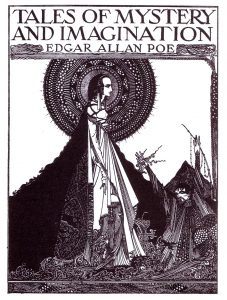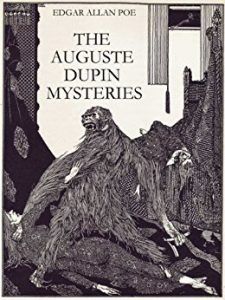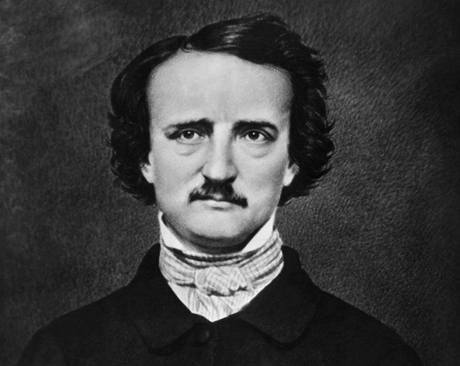Edgar Allan Poe’s name is practically synonymous with horror and the Gothic genre, but did you know that he was also a prolific writer of poetry, literary criticism, satires and hoaxes, detective fiction, and works in fields such as cosmology and cryptography? You might recognize the titles of such classics as “The Raven” and “The Tell-Tale Heart,” two works that embody the gloomy and grotesque nature of Poe’s most famous pieces.
 D.H. Lawrence described Poe as “an adventurer into the vaults and cellars and horrible underground passages of the human soul. He sounded the horror and the warning of his own doom.” Indeed, just as Poe became famous for his tales of the mysterious and the macabre, his own life and death have remained shrouded in mystery.
D.H. Lawrence described Poe as “an adventurer into the vaults and cellars and horrible underground passages of the human soul. He sounded the horror and the warning of his own doom.” Indeed, just as Poe became famous for his tales of the mysterious and the macabre, his own life and death have remained shrouded in mystery.
The child of two actors, Poe was born in Boston in 1809 and orphaned after his father’s desertion and mother’s untimely death. He was taken in by a family in Richmond, Virginia, and over the years he struggled with money and the trajectory of his career (dropping out of college after only one semester and failing as an officer cadet at West Point) while struggling to get started in publishing.
In the wake of his struggles, Poe turned to writing as his sole source of income, paving the way for a life of financial troubles and debt. He married his 13-year-old cousin, Virginia Clemm, and moved from city to city as he worked. His first collection of poetry was published anonymously, crediting him only as “a Bostonian.” Once he landed various editorial roles in magazines and made a name for himself as a cutthroat literary critic, Poe was able to begin publishing some of the short stories that he’s well-known for today.
Poe published a collection of short stories in the 1830s titled Tales of the Grotesque and Arabesque, which contained such horrifying stories as “Ligeia” and “The Fall of the House of Usher.”
Central themes in his stories were often death and madness, and he’s said to have been inspired by the early deaths of both his mother and his wife.
He played up to the public’s tastes during the time, but wrote stories satirizing Gothic literature just as often as he wrote stories meant to be taken seriously.
 Though Poe never had major financial success during his lifetime, he did enjoy a few accolades and made himself into a household name. With the publication of stories in the mystery genre, such as “The Murders in the Rue Morgue,” Poe earned the distinction of “Father of the Detective Story,” and he also became known as a pioneer in the science fiction genre.
Though Poe never had major financial success during his lifetime, he did enjoy a few accolades and made himself into a household name. With the publication of stories in the mystery genre, such as “The Murders in the Rue Morgue,” Poe earned the distinction of “Father of the Detective Story,” and he also became known as a pioneer in the science fiction genre.
Perhaps his most famous poem, “The Raven” was met with instant success upon publication in 1845.
Along with his most famous short stories and poems, Poe also wrote literary criticisms, essays on physics, literary theory, and the craft of composition, as well as his one and only novel, The Narrative of Arthur Gordon Pym of Nantucket.
Poe died in October of 1849, though the circumstances of his death remain a mystery. Theorized causes of his death include alcohol or carbon monoxide poisoning, epilepsy, rabies, cholera, heart disease, murder, and other ideas. As celebrated as he is today, Poe’s legacy was for many years defamed by the comments of one of his adversaries, Rufus Griswold.
Griswold attempted to portray Poe as a madman, depraved sexist, and an alcoholic, and for many years, his account of Poe’s life became the popularly accepted one.
Today, much of Griswold’s evidence has been uncovered as forgeries and exaggerations, and Edgar Allan Poe has become one of the most beloved American writers of all time.
You can purchase an anthology of all of Poe’s work here.











Leave a Reply
You must be logged in to post a comment.